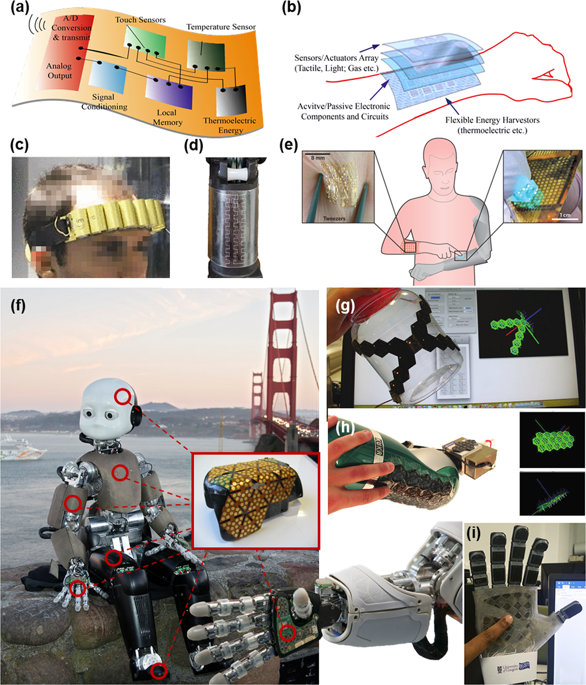npj Flexible Electronics ( IF 12.3 ) Pub Date : 2019-01-04 , DOI: 10.1038/s41528-018-0045-x Carlos García Núñez , Libu Manjakkal , Ravinder Dahiya

|
Energy autonomy is key to the next generation portable and wearable systems for several applications. Among these, the electronic-skin or e-skin is currently a matter of intensive investigations due to its wider applicability in areas, ranging from robotics to digital health, fashion and internet of things (IoT). The high density of multiple types of electronic components (e.g. sensors, actuators, electronics, etc.) required in e-skin, and the need to power them without adding heavy batteries, have fuelled the development of compact flexible energy systems to realize self-powered or energy-autonomous e-skin. The compact and wearable energy systems consisting of energy harvesters, energy storage devices, low-power electronics and efficient/wireless power transfer-based technologies, are expected to revolutionize the market for wearable systems and in particular for e-skin. This paper reviews the development in the field of self-powered e-skin, particularly focussing on the available energy-harvesting technologies, high capacity energy storage devices, and high efficiency power transmission systems. The paper highlights the key challenges, critical design strategies, and most promising materials for the development of an energy-autonomous e-skin for robotics, prosthetics and wearable systems. This paper will complement other reviews on e-skin, which have focussed on the type of sensors and electronics components.
中文翻译:

能源自主电子皮肤
能源自主权是用于多种应用的下一代便携式和可穿戴系统的关键。其中,电子皮肤或ê -skin是当前深入研究的问题,由于在领域的更广泛的适用性,从机器人到数字健康,时尚与物联网(IOT)。电子皮肤需要多种类型的电子组件(例如传感器,执行器,电子设备等),密度很高,并且需要在不增加笨重电池的情况下为它们供电,这推动了紧凑型柔性能源系统的发展,以实现自我保护。动力或能源自主è-皮肤。由能量收集器,能量存储设备,低功率电子设备和基于高效/无线功率传输的技术组成的紧凑且可穿戴的能源系统,有望掀起可穿戴系统(尤其是电子皮肤)市场的革命。本文回顾了自供电电子皮肤领域的发展,特别侧重于可用的能量收集技术,大容量能量存储设备和高效电力传输系统。本文重点介绍了开发用于机器人技术,假肢和可穿戴系统的能量自治电子皮肤的关键挑战,关键设计策略和最有前途的材料。本文将补充对e的其他评论-皮肤,重点放在传感器和电子元件的类型上。


















































 京公网安备 11010802027423号
京公网安备 11010802027423号